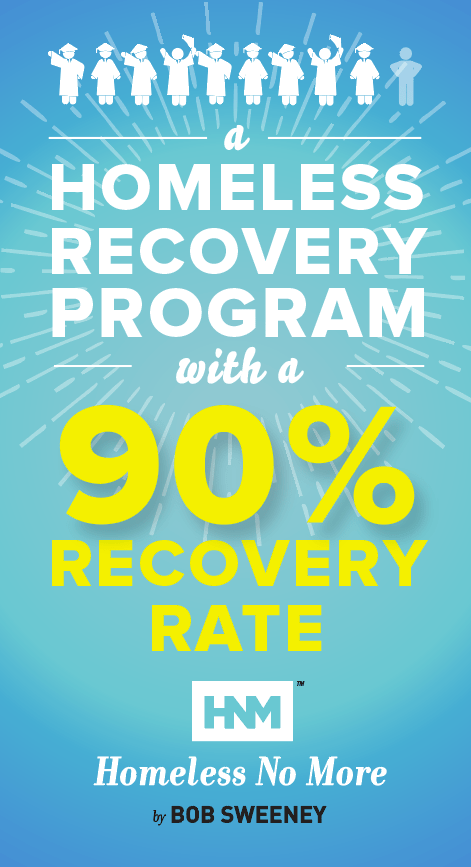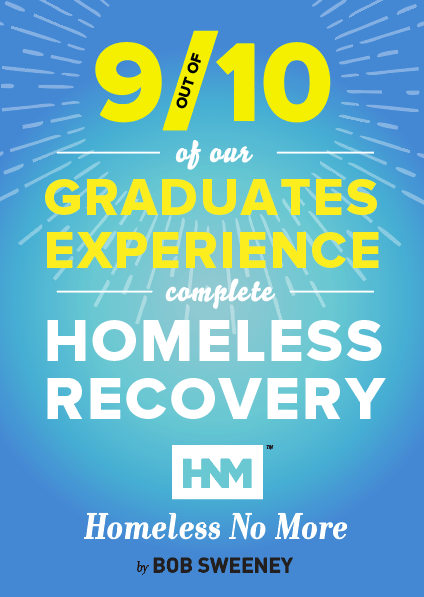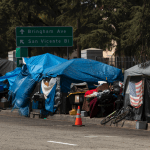As we navigate the complexities of modern society, the issue of homelessness in the United States remains a persistent challenge, touching the lives of hundreds of thousands across the nation. Recent statistics illuminate the gravity of the situation, with over 650,000 individuals experiencing homelessness on any given night, a stark reminder of the socio-economic disparities that plague our communities. This crisis not only demands immediate attention but also calls for a collective response, grounded in compassion, innovation, and sustained action.
Amidst this backdrop, the Homeless No More program stands as a beacon of hope. With a remarkable 90% success rate, our mission transcends mere temporary relief, aiming instead to offer a lifeline towards stability, dignity, and a renewed sense of purpose. Our approach is holistic, addressing the root causes of homelessness such as drugs, alcohol, mental illness, broken relationships, and poverty. Through immediate housing assistance, comprehensive support services, and employment opportunities, we pave the way for long-term recovery and societal reintegration.
With the expertise of Bob Sweeney in mind, let us delve into this pressing issue, exploring how we, as a united community, can contribute to a solution that not only alleviates immediate suffering but also fosters an environment where homelessness is no longer a defining reality for countless individuals across the United States. Join us as we embark on this crucial journey, guided by the vision and values of the Homeless No More program, towards a future where every person has access to the safety, security, and opportunity they rightfully deserve.
How to Help Homeless People in the United States: Volunteer
Volunteering is a powerful means through which each of us can contribute to alleviating the homelessness crisis in the United States. The act of volunteering goes beyond mere charity; it is an expression of solidarity and commitment to the well-being of our fellow citizens. By dedicating our time, skills, and compassion, we engage directly with the issue, fostering a sense of community and hope among those who want and need it most.
The value of volunteering cannot be overstated. Whether it’s serving meals at a shelter, offering professional services pro bono, or participating in local outreach programs, each action contributes to a larger effort to support and uplift individuals experiencing homelessness. These efforts not only provide immediate relief but also build the foundations for long-term recovery and reintegration into society.
We encourage anyone reading this article to visit your local homeless shelter’s website and volunteer to serve the homeless. Please volunteer – more than annually if possible. Homeless shelters see a large amount of volunteers around holidays. Purpose to volunteer during “off seasons.” Organize a group from work, the neighborhood or your church to join you.
Help Put Someone On The Road To A Better Life
At Homeless No More, we believe that together, we can make a significant impact. Our program has a 90% success rate in helping individuals transition from the streets to stable, fulfilling lives. This success is not ours alone; it is shared with volunteers and donors who have joined us in this vital mission. Your participation, whether through volunteering your time or contributing financially, can extend the reach of our efforts, bringing hope and tangible change to more people across the nation.
We invite you to join us in this mission. Discover the various ways you can get involved and help put someone on the road to a better life. Your support can transform lives, offering individuals the opportunity to rebuild with dignity and purpose. Together, we can ensure that homelessness is not an ongoing cycle but a turning point towards a brighter future.
Join us at Homeless No More, and be a part of the solution. See how you can help make a difference today.
Is Ending Homelessness Possible?
Tackling homelessness requires a multifaceted approach, rooted in understanding the complex causes and implementing strategic, compassionate solutions. However, at Homeless No More we believe the homeless will always be with us because the root triggers (drugs, alcohol, mental illness, broken relationships, and poverty) that lead to homelessness will always be with us. Eradicating addiction and providing adequate mental health to every person in the world are impossible tasks. Even so, we purpose to enact as much change as humanly possible in our community – step by step and person by person. That being said, our mission is not to end homelessness completely but to offer real change – not spare change – to anyone who wants to recover permanently. Even showing them the possibility of change can help a homeless person realize the “want to” can definitely become a force to lead them to change.
Here are five effective strategies that, when combined, can make a significant impact in mitigating the homeless crisis:
- Immediate Housing Assistance: Often considered the cornerstone of addressing homelessness, immediate housing is ensuring access to safe and stable housing. “Housing First” programs prioritize getting individuals into housing without preconditions. Although these programs are temporary solutions (band aids), they are often necessary when an individual or family suddenly finds themselves homeless due to an unexpected life event.
- Comprehensive Support Systems: Once shelter is secured, providing ongoing support services is crucial. This includes access to healthcare, mental health services, substance abuse treatment, and social services. Tailored support systems like Homeless No More address the varied needs of the homeless population, facilitating long-term stability and recovery.
- Employment and Education Programs: Getting to root triggers to establish education that leads to economic stability is a key to preventing and ending homelessness within the participants of our program. Employment programs, vocational training, and education opportunities equip individuals with the skills and resources needed to achieve financial independence and break the cycle of homelessness.
- Policy and Advocacy Efforts: Advocating for policies that address the contributing factors of homelessness — such as affordable housing shortages, living wage laws, and healthcare access — is essential. Public policy can create systemic changes that reduce the risk of homelessness and provide a safety net for vulnerable populations.
Community Engagement and Awareness: Building public awareness and fostering community engagement are vital in mobilizing resources and support for homeless individuals. Education campaigns, community outreach programs, and volunteer initiatives strengthen community ties and encourage a collective response to homelessness. 1
The Importance of Comprehensive Approaches
Addressing homelessness requires more than just a roof over one’s head. It necessitates a holistic strategy that considers the full spectrum of human needs — physical, emotional, social, financial and spiritual. By providing foundational support that addresses the root causes of homelessness and robust support systems within Homeless No More, we can teach economic stability and offer a pathway out of homelessness that is both sustainable and dignified.
Homelessness is not an insurmountable problem, but it demands concerted efforts from all sectors of society, including government, non-profits, businesses, and communities. The success of the Homeless No More program, with its 90% success rate in aiding individuals to transition from homelessness, illustrates the power of comprehensive, compassionate approaches. By embracing these strategies, we can work towards a future where those who want to recover from homelessness can.
Immediate Housing Assistance for Homeless
Immediate housing assistance plays a pivotal role in the journey towards recovery and societal integration for homeless individuals. The Housing First approach emphasizes the provision of permanent housing as the initial step in ending homelessness. This method operates on the principle that securing stable housing lays the groundwork upon which individuals can pursue personal goals and improve their quality of life. By offering housing without preconditions like employment, income, or sobriety, Housing First enables individuals to focus on recovery and rebuilding their lives in a stable environment. 2
Rapid Re-Housing complements the Housing First model by providing short-term rental assistance and services aimed at quickly securing housing for the homeless. This approach is tailored to the needs of the individual, facilitating quick housing access, increased self-sufficiency, and sustained tenancy. Rapid Re-Housing focuses on a broad spectrum of individuals, including those with limited or no income and survivors of domestic violence, demonstrating its versatility in addressing homelessness.
Both Housing First and Rapid Re-Housing underscore the importance of housing as a basic necessity, akin to food and water. They recognize that stability in housing predetermines when individuals can then address other aspects of their lives, such as employment and health. These models advocate for client choice in housing selection and support service participation, which is crucial for successful outcomes. Past studies show that participants in Housing First and Rapid Re-Housing programs achieve faster housing stability, remain housed longer, and utilize fewer emergency services, ultimately proving to be cost-effective solutions for some communities. 3
Implementing immediate housing assistance – through shelters or a housing program as detailed above – offers a pragmatic and humane solution to temporary homelessness but must be incorporated with a stable platform for recovery that addresses the five triggers and ultimately leads to permanent reintegration into society.
Free Government Money for Homeless
The role of public support in government initiatives to assist the homeless is paramount, with various programs making significant strides towards mitigating homelessness across the United States. The U.S. Department of Housing and Urban Development (HUD), for example, has been instrumental in connecting over 424,000 households to homeless support services, helping them exit or avoid homelessness in 2023 alone. This effort encompasses grants to Continuums of Care (CoC) and collaboration with Public Housing Authorities to provide housing through public housing, Housing Choice Vouchers, and the Emergency Housing Voucher program.
Moreover, federal funding plays a crucial role in supporting homelessness programs. The McKinney-Vento Homeless Assistance Grants program, administered by HUD, is central to the federal government’s effort to combat homelessness. It supports critical services at the local level through the Emergency Solutions Grant (ESG) and the CoC program, funding a wide range of activities from street outreach and emergency shelter to rapid re-housing and permanent supportive housing. 4
The Veterans Affairs (VA) department also provides targeted support to homeless veterans, with programs that successfully housed 46,000 veterans in 2023, exceeding their goal. These programs reflect a comprehensive approach, including housing solutions, healthcare, and employment services, in collaboration with various stakeholders to offer veterans a stable and secure environment. 5
Help Put Someone On The Road To A Better Life
As we celebrate the achievements of these government programs, it’s crucial to remember that organizations like Homeless No More play a vital role in complementing these efforts. With a 90% success rate in transitioning individuals from homelessness to stable, meaningful lives, Homeless No More exemplifies the impact of dedicated support and targeted interventions. Your contributions can extend the reach and impact of these programs, ensuring that more individuals have access to the support they need. Learn how you can contribute and be a part of the solution today.
Helping the Homeless Articles
In addressing the pressing issue of homelessness, a multitude of strategies and insights emerge from scholarly articles and practical initiatives alike. These resources not only deepen our understanding but also illuminate pathways towards more effective assistance for those experiencing homelessness. Drawing from recent publications, we can distill key takeaways that underscore the multifaceted approach required to tackle this complex problem.
Firstly, the importance of a holistic approach is consistently highlighted. Effective homelessness assistance transcends mere shelter provision, and instead incorporates health care, mental health services, substance abuse treatment, and support for social integration. The National Health Care for the Homeless Council emphasizes interdisciplinary care and patient-centered medical attention as best practices, ensuring that services are not only comprehensive but also tailored to individual needs.
Prevention is recognized as equally crucial. Harvard experts argue for interventions at transition points, such as military discharge or exit from foster care, to prevent homelessness before it occurs. This proactive stance is vital in reducing the influx into homelessness and requires a concerted effort across multiple sectors. 6
Moreover, the dual-diagnosis challenge — addressing both substance use and mental health issues simultaneously — is a critical area for intervention. A nuanced understanding of the intertwined nature of these issues is essential for developing effective support systems. 7
Inadequate housing supplies and the need for a diversity of housing options, including long-term and supportive housing, are also identified as key factors. The housing first approach, prioritizing immediate access to housing without prerequisites, is widely supported as a foundational step towards stability and recovery. 8
Finally, the significance of tailored interventions based on age, sex, race, and ethnicity is underscored. Diverse populations experience homelessness differently, necessitating responsive and adaptive strategies to meet varied needs effectively. 9, 10
Free Housing for the Homeless
Free housing initiatives for the homeless have served as a critical foundation for the “rebuilding lives” narrative marred by instability and uncertainty. These programs, central to the philosophy of a “housing first” approach, prioritize securing stable, long-term housing for individuals as a preliminary step towards addressing broader issues related to homelessness, such as employment, health, and social integration.
The importance of free or low-cost housing cannot be overstated. It offers not just a roof over one’s head but a semblance of normalcy and security, essential for any meaningful progress in other areas of life. However, it’s also crucial to understand that while free housing addresses an immediate need, it’s a temporary solution. To truly tackle homelessness at its core, we must delve deeper into the root causes that lead individuals to lose their homes in the first place. These include, but are not limited to, economic hardship, health issues, and systemic barriers to affordable housing.
Homeless No More recognizes this complexity and approaches the issue with a holistic model that goes beyond merely providing shelter. By addressing the root causes of homelessness, such as addiction, mental health issues, and lack of employment opportunities, Homeless No More seeks to equip individuals with the tools they need for a sustainable transition out of homelessness.
Supporting initiatives like Homeless No More can amplify the impact of free housing programs by ensuring that once individuals are housed, they receive the comprehensive support necessary to remain housed and move towards self-sufficiency and integration into society. As outlined by experts from the Harvard Gazette and the World Economic Forum, tackling homelessness requires strong leadership, multidisciplinary collaboration, and a commitment to addressing the myriad challenges faced by those living without stable housing. 11, 12 When a homeless person has shelter AND wrap-around services/care, they are more likely to recover permanently from homelessness. Homeless No More believes a homeless person does not just lack a home. They lack the ability to navigate parts of their life and relationships that limit their success at remaining housed.
By contributing to Homeless No More, you’re not just providing a foundational support, but investing in a future where homelessness is not an insurmountable condition but a challenge that can be overcome with compassion, understanding, and strategic intervention for those that want to recover.
Answering Key Questions
How Can I Really Help a Homeless Person?
To truly help a homeless person, consider both immediate assistance and long-term systemic advocacy. Immediate help can be as simple as engaging in respectful conversation, offering food, or providing information about local shelters and resources. For systemic change, support policies and organizations aimed at addressing the root causes of homelessness, such as drugs, alcohol, mental illness, broken relationships, and poverty. Advocating for these changes can contribute to lasting solutions beyond the individual level.
Who Helps the Homeless the Most?
A wide array of organizations and individuals significantly contribute to helping the homeless, including non-profits like the National Alliance to End Homelessness, shelters, healthcare providers, such as the Health Care for the Homeless program, government agencies, and various local community groups. Additionally, volunteers and donors play a crucial role in supporting these entities’ efforts to provide shelter, healthcare, and assistance services. Collaboration among these groups is essential for addressing the complex needs of homeless individuals and families.
What is the Best Solution for Homelessness?
The best solution for homelessness requires a multifaceted approach that addresses its root causes: drugs, alcohol, mental illness, broken relationships, and poverty. Understanding that homelessness is often a symptom of deeper issues, a foundational change in the individuals’ lives is crucial. This involves not just temporary fixes but a permanent transformation in their outlook and life patterns, addressing the specific problems that led to their homelessness.
Educational programs that cover a wide range of literacies, including financial, relationship, and spiritual literacy, are essential in equipping individuals with the skills they need to navigate life successfully and avoid the pitfalls that can lead to homelessness. Moreover, creating a supportive community that fosters personal growth and accountability is vital.
At Homeless No More, we’ve seen firsthand the impact of addressing these root causes. Our approach offers foundational educational and support services — such as Anger Management, Financial Well Being, Veterans Issues, Parenting, and Men and Women’s issues to name a few — aiming to help heal root triggers that lead to homelessness. By focusing on comprehensive recovery and self-sufficiency, we aim to empower individuals to rebuild their lives on a strong foundation. We give them a hand up instead of a hand out.
What State is Best for Helping Homeless?
States across the U.S. have implemented various programs and initiatives to combat homelessness, with some standing out due to their innovative and comprehensive approaches. For example, states like Utah and Massachusetts have been recognized for their efforts in reducing homelessness through combining housing-first policies and extensive support services, which include mental health care, addiction treatment, and employment assistance. These states demonstrate the importance of a multifaceted strategy that not only provides immediate shelter but also addresses the broader spectrum of needs faced by homeless individuals.
In essence, the most effective solution for homelessness is one that offers a foundational change, enabling individuals to break free from the cycles that led to their homelessness. By focusing on comprehensive recovery and support, we can help homeless individuals rebuild their lives on a solid foundation of stability, dignity, and hope.
Conclusion
In our journey through the multifaceted world of homelessness, we’ve explored the significance of direct assistance, the diverse range of organizations dedicated to this cause, and the complex solutions necessary to address the root causes of homelessness. From understanding the triggers such as drugs, alcohol, mental illness, broken relationships, and poverty, to recognizing the states that lead in providing comprehensive support, it’s clear that tackling homelessness requires a collective and committed effort.
Help Put Someone On The Road To A Better Life
As we conclude, let’s remember that homelessness is not an insurmountable problem but one that can be addressed with dedication, compassion, and strategic action. Homeless No More stands at the forefront of this challenge, offering a beacon of hope and a path to recovery for those affected. With a focus on foundational change and comprehensive support, we aim to not just alleviate homelessness but to give hope and help to those who want it.
Your support can make a significant difference. Whether through donating, volunteering, or simply spreading the word, every action counts in the fight against homelessness. Join us at Homeless No More in our mission to transform lives and build a future where everyone has a place to call home. Together, we can create a world where homelessness is a thing of the past.
Take Action Now
Be a part of the solution. Visit Homeless No More today to learn how you can contribute to making a tangible difference in the lives of the homeless across the United States. Your support can change lives, offering hope, dignity, and a new beginning to those in need. Let’s join hands in this noble cause and work towards a future filled with independence and opportunity for all.
Join us in this crucial mission.
References
- https://endhomelessness.org/ending-homelessness/solutions/
- https://endhomelessness.org/ending-homelessness/solutions/rapid-re-housing/
- Ibid.
- https://www.hud.gov/press/press_releases_media_advisories/HUD_No_23_276
- https://endhomelessness.org/ending-homelessness/policy/federal-funding-homelessness-programs/
- https://news.harvard.edu/gazette/story/2024/01/why-its-so-hard-to-end-homelessness-in-america/
- Ibid.
- Ibid.
- Ibid.
- https://news.harvard.edu/gazette/story/2024/01/why-its-so-hard-to-end-homelessness-in-america/
- https://www.weforum.org/agenda/2021/10/innovative-projects-tackling-homelessness-around-the-world/#:~:text=URL%3A%20https%3A%2F%2Fwww.weforum.org%2Fagenda%2F2021%2F10%2Finnovative
- https://news.harvard.edu/gazette/story/2024/01/why-its-so-hard-to-end-homelessness-in-america/
0009








